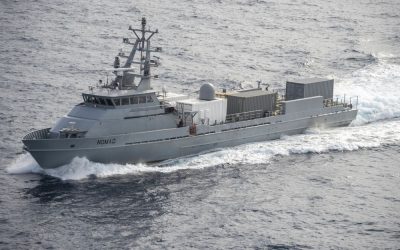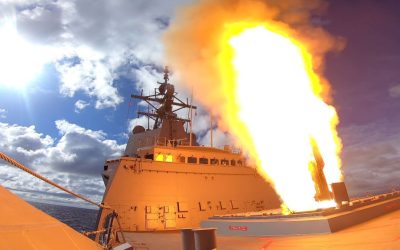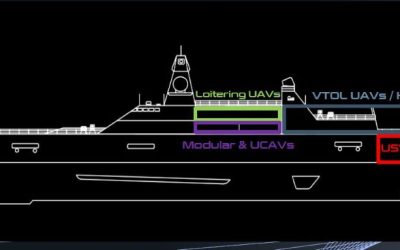China’s new aircraft carrier Fujian is a great leap forward in a number of respects, but the conventionally powered vessel does not match the capability of the US Navy’s flat tops.
Fujian (a Type 003) is larger than its predecessors, but is also conventionally powered, so although it is closer in size to US Navy aircraft carriers this Chinese carrier cannot yet rival the capability of those built in the US.
A Type 004 is believed to be planned, which could be closer in capability to US carriers, but it will be some time before China masters carrier-based aircraft operations of the scale and complexity of those conducted by US Navy. Even so, Fujian has some notable advances, as analysts at the International Institute for Strategic Studies (IISS) stated recently.
In an analysis of the new carrier and its capabilities, IISS experts Nick Childs and Douglas Barrie noted that the new ship much more closely resembles US carrier designs, both in size terms (with current estimates ranging upwards of 85,000tonnes), and because it will be a catapult-assisted take-off but assisted recovery (CATOBAR) carrier. What is more, its catapults are expected to be electromagnetic, like those aboard the newest US carrier, the USS Gerald R Ford.
“This means the Type 003 will be able to accommodate a significantly enhanced air group in terms of numbers of aircraft, their types and their operational potential… and as well as a larger number of combat aircraft, the carrier will also be able to operate fixed-wing airborne early warning and control,” they noted.
But as the IISS points out, “size isn’t everything” and whilst the Type 003 may be closer in size to US carriers, the new vessel does not quite match the capability of its US counterparts in a number of respects – for example, it will have three catapults as opposed to four on the most capable US carriers, and just two aircraft lifts compared to three or four on US ships.
A couple of years ago it was reported that plans for a nuclear-powered carrier design had been put on hold as a result of technical and costs considerations, but the IISS expects that the next stage in the PLAN’s carrier capability after Type 003 will be a follow-on CATOBAR vessel with nuclear propulsion, perhaps an even larger unit.
It believes that Beijing wants to have at least six carriers in operation at some point in the 2030s. Whether that is in the end the trajectory will depend on a range of strategic and technological developments, but it will certainly represent a considerable level of investment and reflects the scale of China’s maritime ambition.






